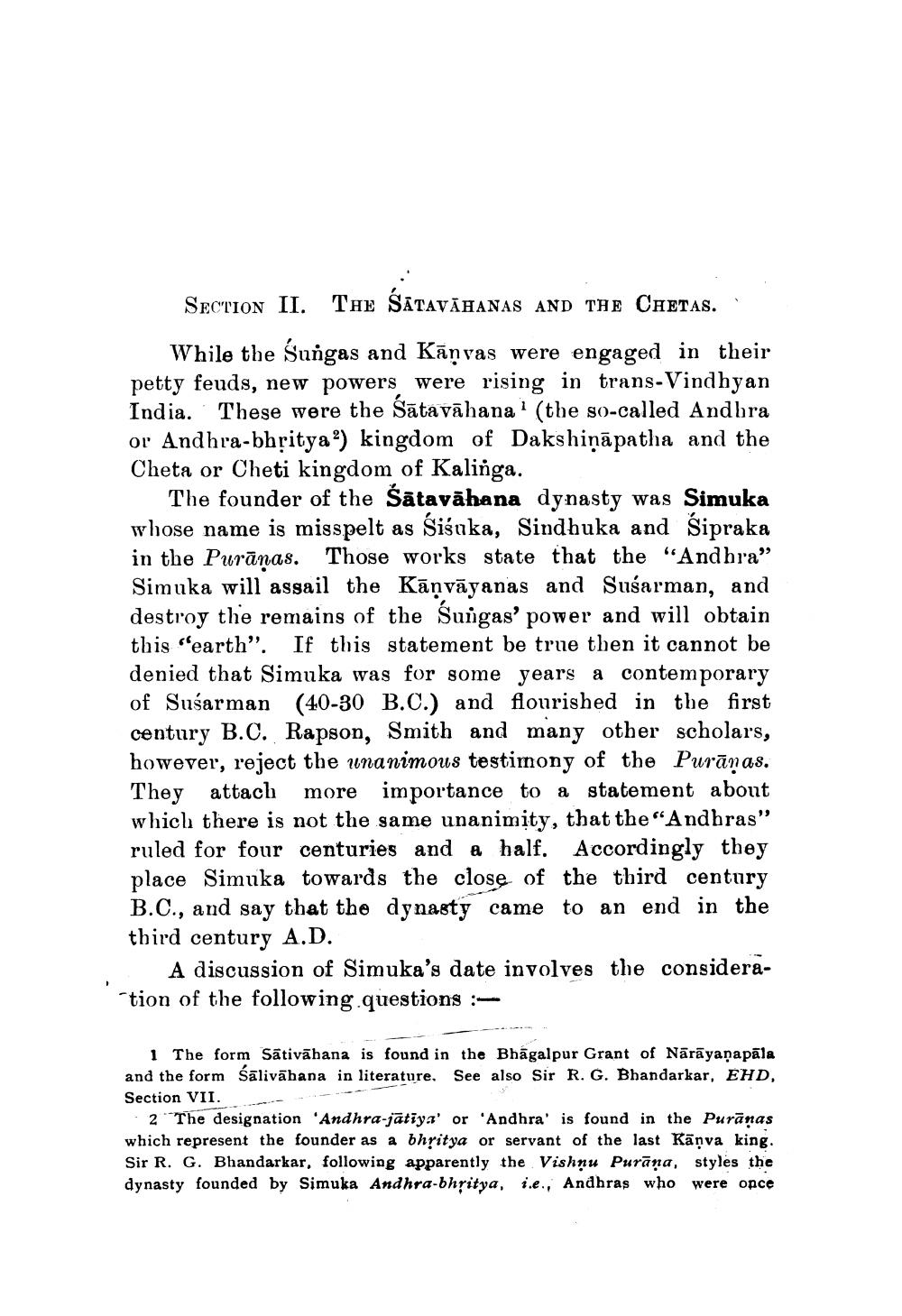________________
SECTION II. THE ŚĀTAVĀHANAS AND THE CAETAS.
While the Sungas and Kāņvas were engaged in their petty feuds, new powers were rising in trans-Vindhyan India. These were the sātavāhana' (the so-called Andhra or Andhra-bhrityaa) kingdom of Dakshiņāpatha and the Cheta or Cheti kingdom of Kalinga.
The founder of the Śātavāhana dynasty was Simuka whose name is misspelt as Siśuka, Sindhuka and Sipraka in the Purāṇas. Those works state that the "Andhra” Simuka will assail the Kāņvāyanas and Sušarman, and destroy the remains of the Suigas' power and will obtain this "earth”. If this statement be true then it cannot be denied that Simuka was for some years a contemporary of Sušarman (40-30 B.C.) and flourished in the first century B.C. Rapson, Smith and many other scholars, however, reject the unanimous testimony of the Purānas. They attach more importance to a statement about which there is not the same unanimity, that the"Andhras" ruled for four centuries and a half. Accordingly they place Simuka towards the close of the third century B.C., and say that the dynasty came to an end in the third century A.D.
A discussion of Simuka's date involves the consideration of the following questions :
1 The form Sātivāhana is found in the Bhagalpur Grant of Nārāyaṇapāla and the form sālivāhana in literature, See also Sir R. G. Bhandarkar, EHD, Section VII.
- 2 The designation 'Andhra-jātiyz' or 'Andhra' is found in the Purānas which represent the founder as a bhritya or servant of the last Kāņva king. Sir R. G. Bhandarkar, following apparently the Vishnu Purāna, styles the dynasty founded by Simuka Andhra-bhritya, i.e., Andhras who were once




